Valencia festival Facts: Interesting Fallas Info and Its History
A Valencia festival happens annually that you should see once in your lifetime. It is an amazing time to be in this Spanish city on the coast, when artists show off their talents and communities come together in celebration. We quickly learned all Fallas Festival has to offer when we visited.
Disclosure: We may make a small commission from affiliate links in this post, but all opinions are ours. We bring you content with genuine facts, photos, thoughts, and recommendations. Always. As Amazon Associates, we earn from qualifying purchases. This helps keep our content free and accessible to our readers.
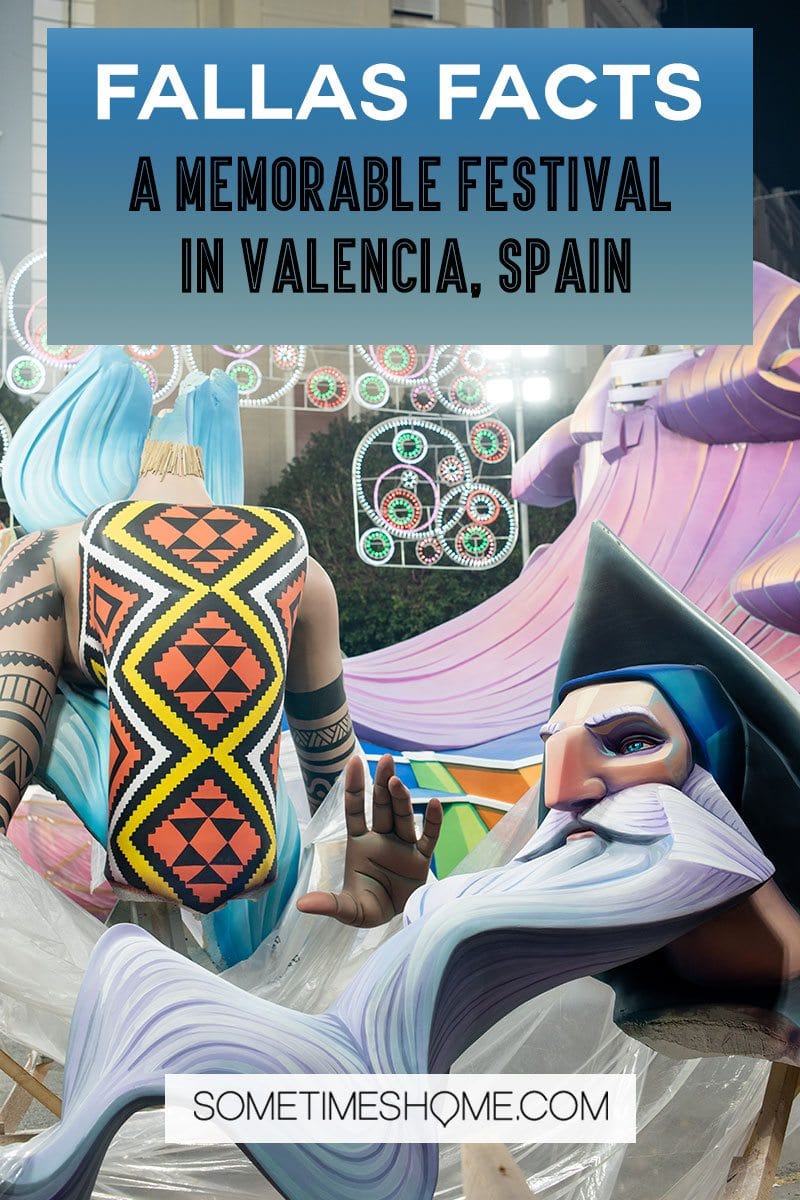
Post Contents
Season and Day of Fallas Festival
The Month for Fallas Festival in Valencia
Fallas Festival is in March every year.
There are 19 Days of Fallas
The main five days are the 15 through 19 of March each year. But there are several events and milestones in the two weeks prior in Valencia, leading up to the main events.
If you want to see the main sculpture near completion – or the main event, when that sculpture is burned – go towards the last few days of Fallas Festival. Consider perhaps going for the day before the last day so you have a chance to see all the sculptures completed (which takes a while if you see the smaller ones too), then for the last day too. Stay a day or two afterward to see Valencia somewhat back to normal!
Fallas Might be 19 Days, but It's a Focus for Many Valencians, All Year
There's Falles Committees for each neighborhood or district, whose focus is on the festival year round.
There's also artists that work on the Fallas sculptures year round. An “artista fallero” is a skilled sculptor, painter and visionary. Many of the artists work in an area known as “Ciudad del Artista Fallero” in Valencia, which has the largest concentration of Fallas artist workshops.
Falles is a Part of UNESCO's Intangible Cultural Heritage List
In November 2016, Falles Festival was given the honor of being added to UNESCO's Intangible Cultural Heritage List. They're in the ranks of things like the centuries old beer culture in Beglium or Kabuki Theater in Japan.
How to Pronounce “Falles” or “Fallas”
First thing's first! We weren't 100% sure how to pronounce the word before arriving in Valencia especially because Barcelona has the Catalan language, which confused us even more.
The correct way to say “fallas” is: fye-yas. Or fi-yes.
There are two spellings of Falles (or Fallas), and they're both correct. One is the Valencian way, with an “a” and the other, with an “e”, is Spanish.
Most people in Valencia today speak Spanish. But the spelling influences remain. (In fact, we never even heard of a Valencian language before inquiring about the differences in spelling.) Thus, we've used both spellings in this post.
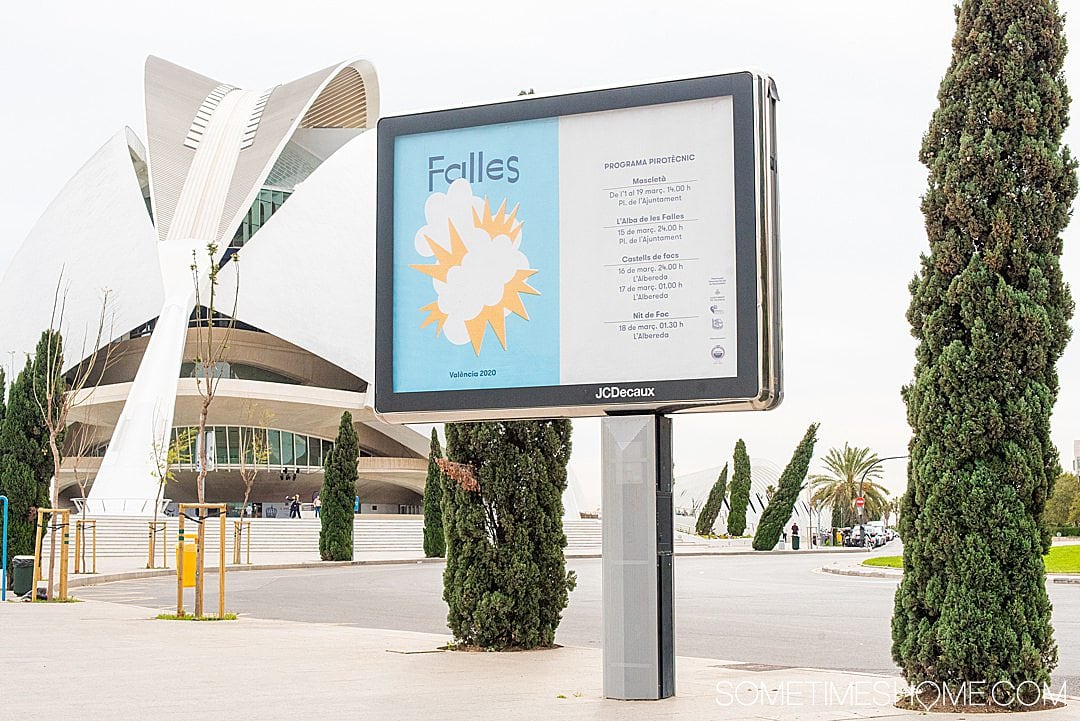
“Fallas” Means More than One Thing
Fallas means a few things. First, it refers to the festival. Secondly, it refers to the sculptures or monuments created. Thirdly, it can also refer to the individual pieces that make up the larger sculptures. Lastly, from what we understand, “Falla” refers to the assembly of the ninots that create the monuments.
How it All Started
Many countries have unique celebrations to welcome the seasons. Holi festival marks the end of winter in India. Kurent Festival welcomes spring in Slovenia. Midsummer's festival in Sweden is beloved by all, welcoming summer into their lives in June. And Valencia has Fallas!
The festival as it's known today has been around for nearly 100 years; it began in the 1920s. But the tradition of burning things before the Festival of St. Joseph seems to go back for centuries. (Exactly when though seems like it's up for debate.)
Carpenters would burn pieces of wood that held up winter lights come springtime. Eventually, the church aligned this ritual with the day before March 19, St. Joseph's Day. He's the patron saint of carpenters. There's also a pagan festival of lighting fires to welcome spring. Fallas has a bit of that tradition too.
Fallas has some serious roots in Valencian history and has earned its place as part of the culture.
There are Lots of Parades for this Valencia Festival
There are small parades and big parades. It felt random to us (though we're sure there was a rhyme and reason to the timing). But we'd be touring around Valencia the weekend we were there (March 7 to 9), and a parade would go by!
One such parade showed us how one community's children celebrate. They dress up, honor the community princess and prince of sorts dressed in traditional Fallas garb and stop to take photos.
Fallas Fact: The biggest parade during the festival is on the last day, March 19, beginning at 7:00pm, called the Procession of Fire.
There's a Main Fallas Monument (or Sculpture) Built in the Main Square Each Year for the Famous Valencia Festival
There's a huge Fallas monument — or sculpture — that's pieced together within about a week in the main square. (The pieces have already been pre-designed and manufactured at that point.) We started to see the one for 2020 take form, with the bottom portion of a sitting figure and his or her second arm nearby to be attached in the days following our trip.
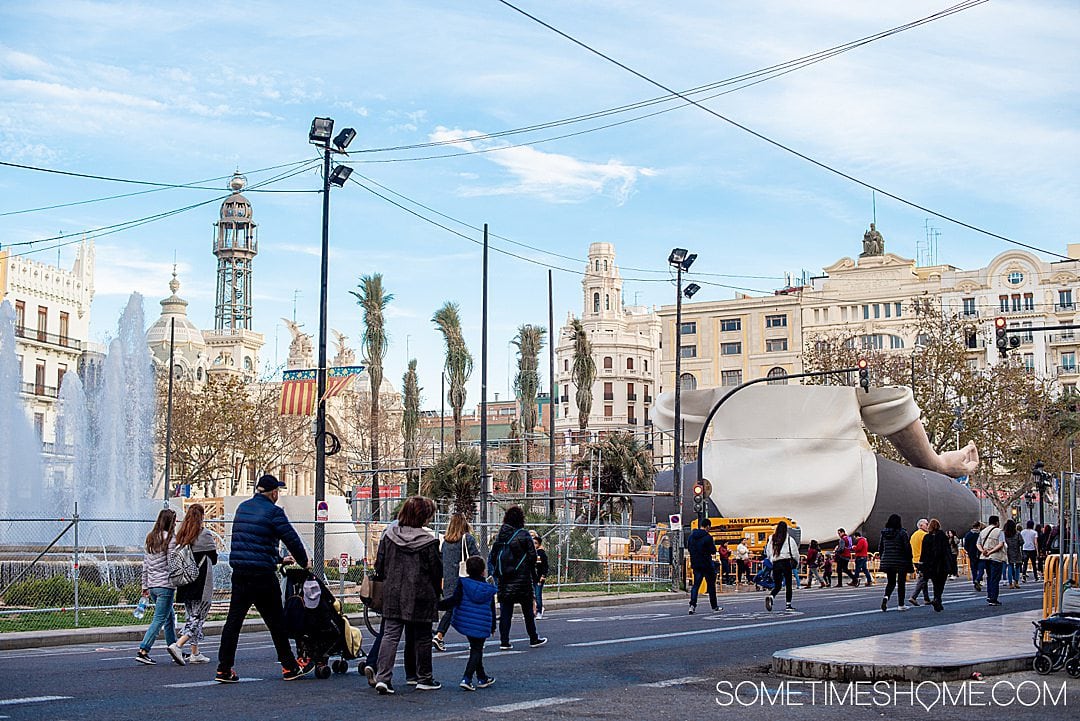
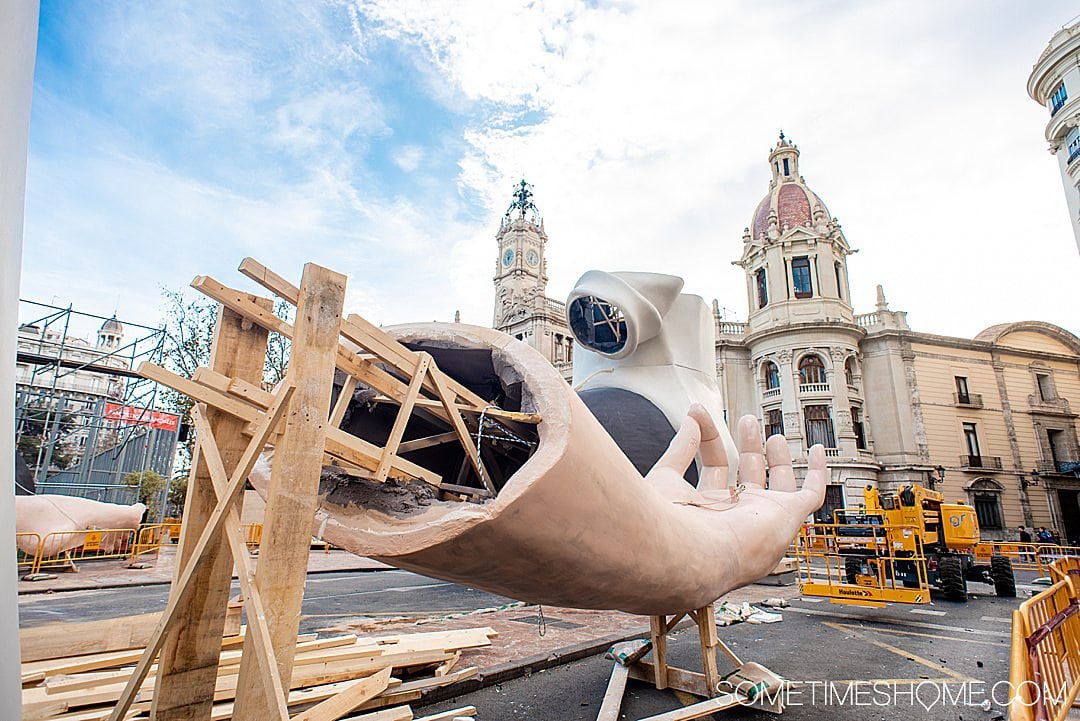
Over a Dozen Neighborhoods Have Their Own Fallas Sculptures
We learned that the neighborhoods put together their own incredible monuments. They're not as grand as the main Fallas, but they're still pretty large. And INCREDIBLY impressive.
We saw several deconstructed sculptures that would be pieced together in the days following the time we were there. One of the main streets to view a couple at consecutive intersections is Carrer de Cirilo Amoros between the park to the east and Carrer de Russafa (street) to the west.
There are hundreds of fallas around Valencia during the celebration. (Nearly 800.) That's the pieces that make up the monuments. From what we understand, in 2020, there were supposed to be 13 total constructed monuments around Valencia for Fallas. (That's the total structures put together from all the individual fallas components, displayed like public art around the city of Valencia for four days until they're burned!)
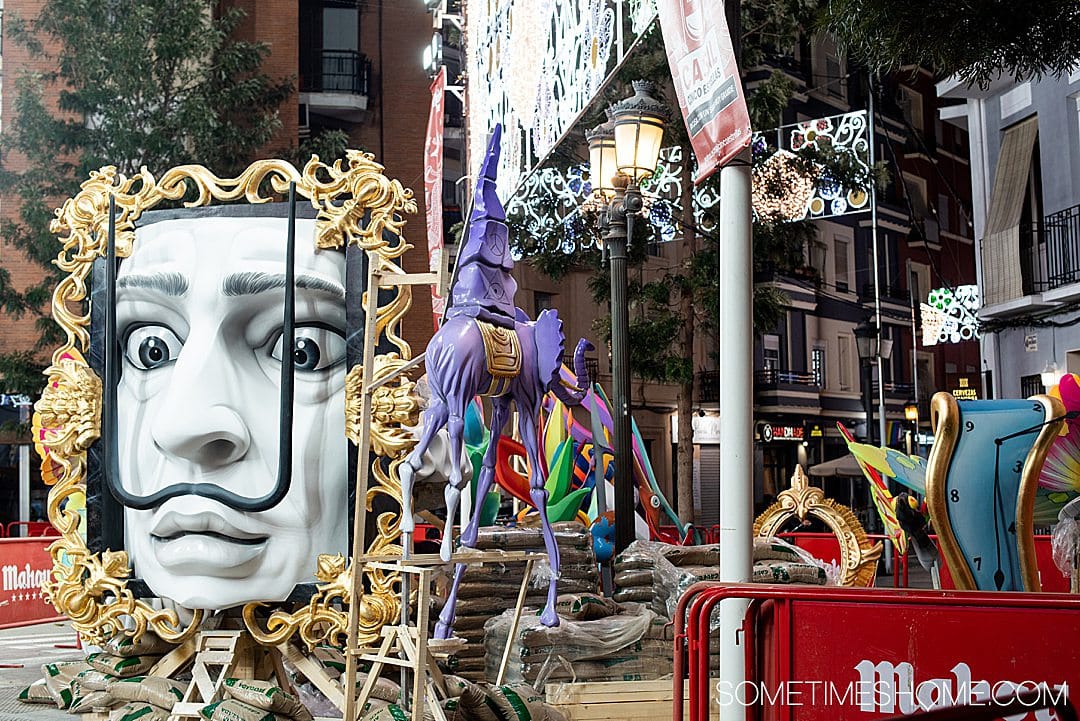
All of the Monuments Must be Assembled by March 15
The monuments – large and small – must be put together by March 15 each year. They have to be ready for judging the morning of March 16 when the single “ninot indulet” is chosen to be pardoned from the fire. The initiative is called, “Indult del foc,” or “pardon from fire.”
The Fallas Museum contains the “ninots” that have been pardoned from fire each year since the tradition began in 1934. A Children's Ninot, that is to say one created with a theme in mind that was age appropriate for kids, began to be pardoned as well beginning in 1963.
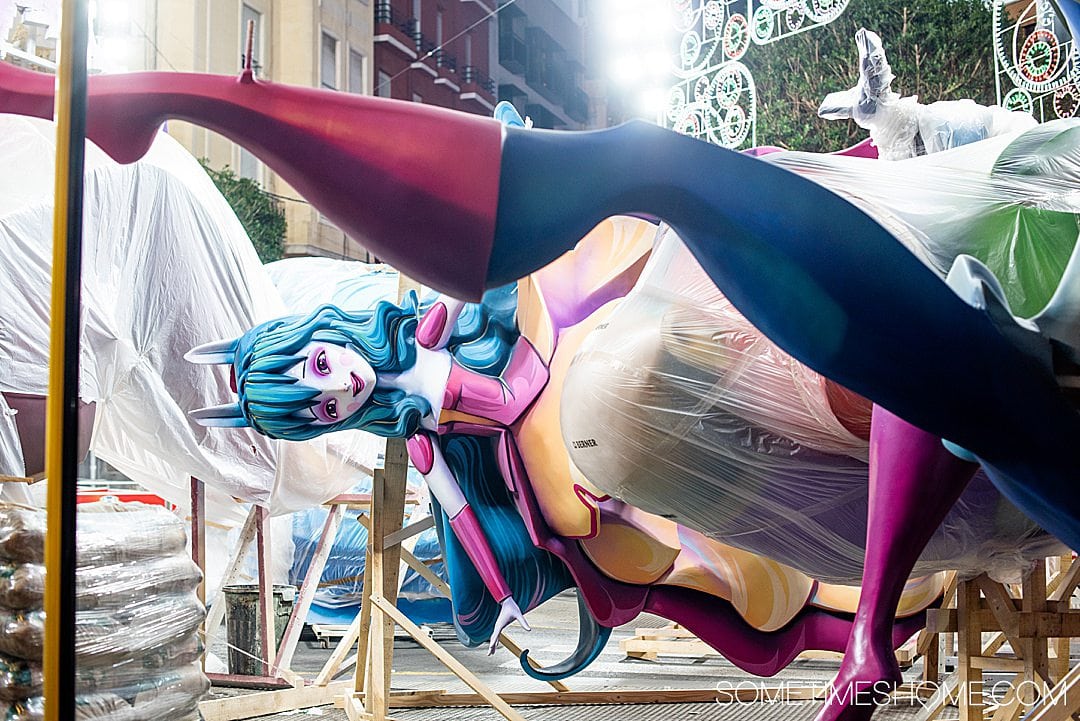
On the Last Day of Fallas Festival, March 19, The Fallas Sculptures Are Burned
You read that correctly! They are burned. Can you believe it?
On the last day of Falles, which is always March 19, there's a “fire parade,” and they burn the main falle sculpture. This is perhaps why there is an association with Fallas translating to “Fire Festival”. From our research, it doesn't quite mean that, but there is a Latin origin in the word that refers to “torch.”
Sad but true Fallas Fact: All the Fallas are burned, big and small in an event called “La Cremà,” or “The Burning”. (Although perhaps there's something poetic about it.)
According to Visit Valencia, the small Fallas start to burn at 10:00pm on March 19th. 12:30am is the time the 1st prize-winning Fallas is burned. The largest one, in Plaza del Ayuntamiento (the main square where City Hall is) is set ablaze at 1:00am.
Pastry Stands Pop Up All Over Town
It's a tradition to eat “buñuelos” (fritters) during Fallas. You'll see dozens of little concession stands around the city selling them along with churros made a variety of ways, including plain, with chocolate, strawberry or caramel.
The stand below is selling buñuelos de higos (with a fig filling) and buñuelos de calabaza (with a pumpkin filling).
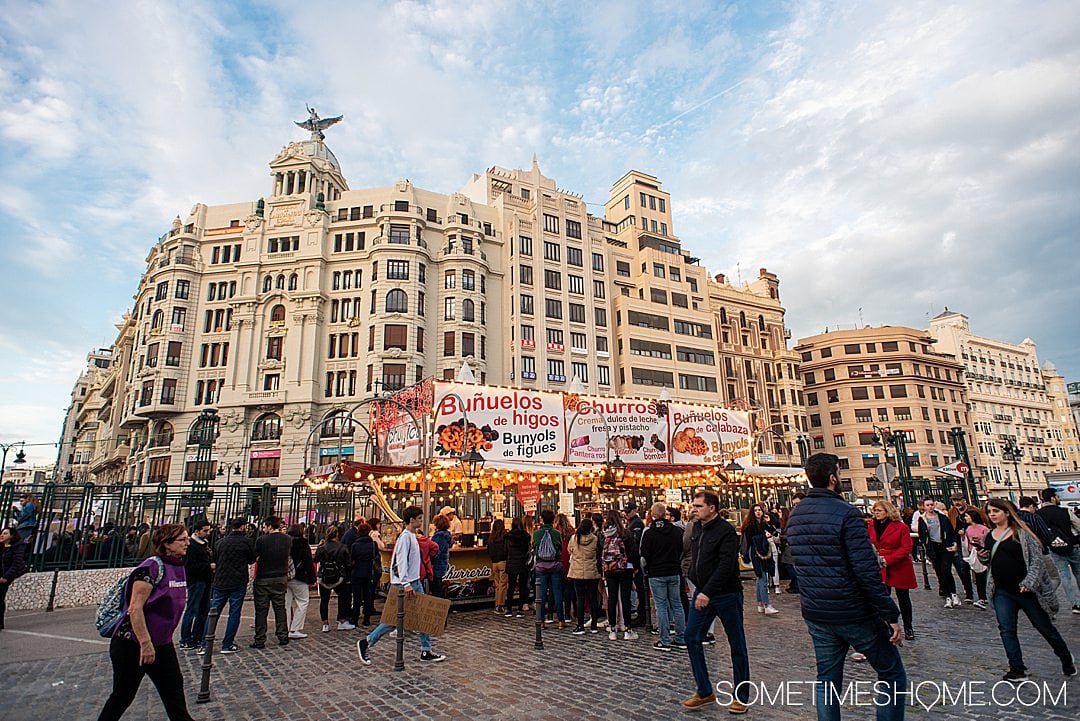
What the “Puppet” like Figures are Called
The sculptures are largely comprised of satirical figures with expressive faces.
Fallas Fact: They're called ninots.
In the 1930s and 1940s there were created from wax, wood, and cloth. In the 1950s, they were created from processing cardboard. The 1960s and 1970s introduced polyester into the mix. And the 1980s and 1990s brought expanded polystyrene. (Whose manufacturing, unfortunately, is terrible for the environment. If you've ever received a package with light “styrofoam” like material, it's likely it was expanded polystyrene.)
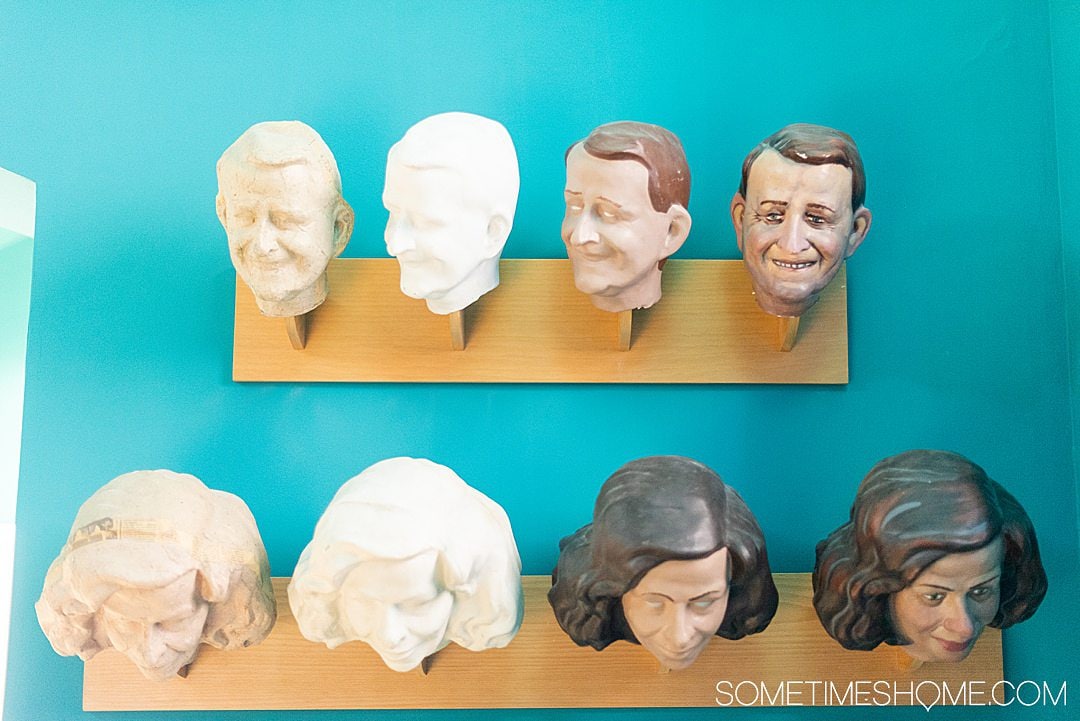
There's a Vote for Two Winning Ninots Created Each Year that are Pardoned from the Fire
You can be a part of saving one or two ninots from the fire if you visit Valencia during the voting! The voting takes place from the last day of January until March 12. It only costs a few euros to enter the Arquerías Hall of the Science Museum (Museu de les Ciències) to vote.
It's pictured below, located in the City of Arts and Sciences area of Valencia.
The true joy of a visit during this time, however, is seeing the beauty of the pieces created for the year by talented artists up close.
Monday to Thursday: 10:00 am to 8:00 pm
Friday to Sunday: 10:00 am to 9:00 pm
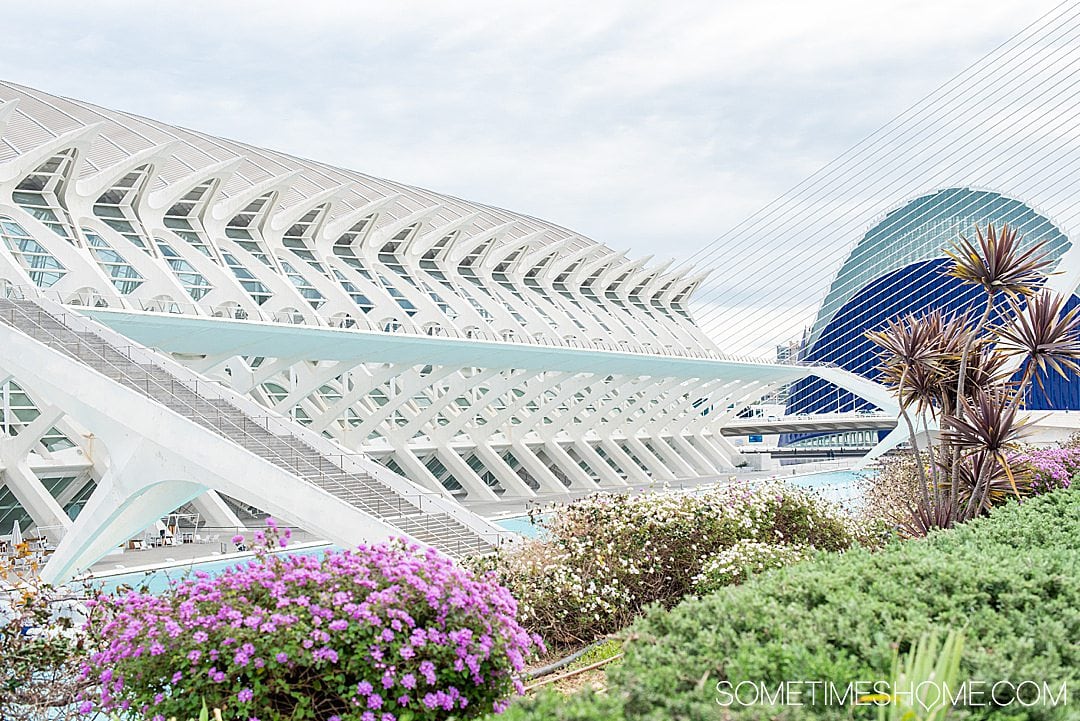
There's a Fallas Museum That's Open Year Round
It was really interesting to visit the Museu Faller de Valencia. It's a Fallas Museum, open everyday.
Monday to Saturday: 10:00 am to 7:00 pm
Sundays and Holidays: 10:00 am to 2:00 pm
It's right near the “City of Arts and Sciences,” in Valencia. It's the strip of museums created with incredibly modern (even futuristic feeling) architecture. We recommend combining visiting the museum with seeing this area of Valencia.
It's filled with the pardoned ninots, the official posters for each year of the Falles Festival dating back to 1929, and has portraits of the Fallas Queens through the years on its second floor.
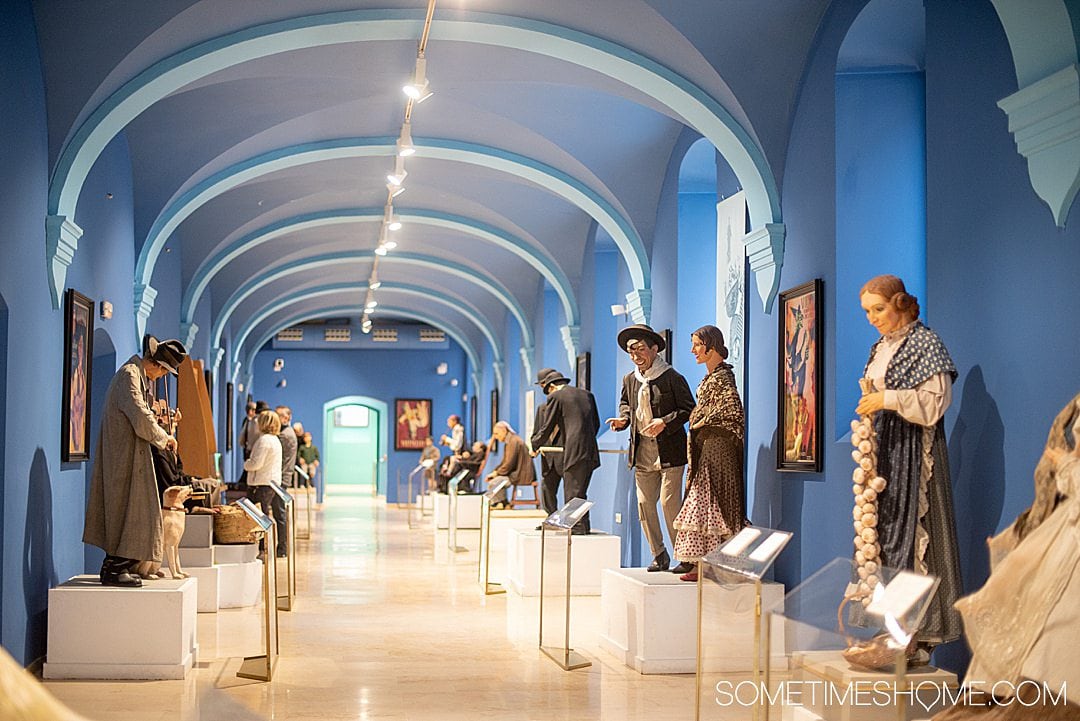
People Randomly Throw Fireworks While Drinking In the Streets
If there are two things that were utterly apparent from the moment we stepped off the train in Valencia and walked to our hotel in the main old town of the city, it was this:
- Everyone drinks in the main square, Plaza del Ayuntamiento, and surrounding pedestrian streets during Falles. €1 for a beer on the go? Sure!
- People randomly throw fireworks and firecrackers. It's not dangerous per se – you never really see the sparks or fire. You just HEAR the loud, alarming BOOM! (And it is alarming. It sounds like someone opened gunfire somewhere.) And the little pops and cracks on the streets and sidewalks from the small snaps kids throw.
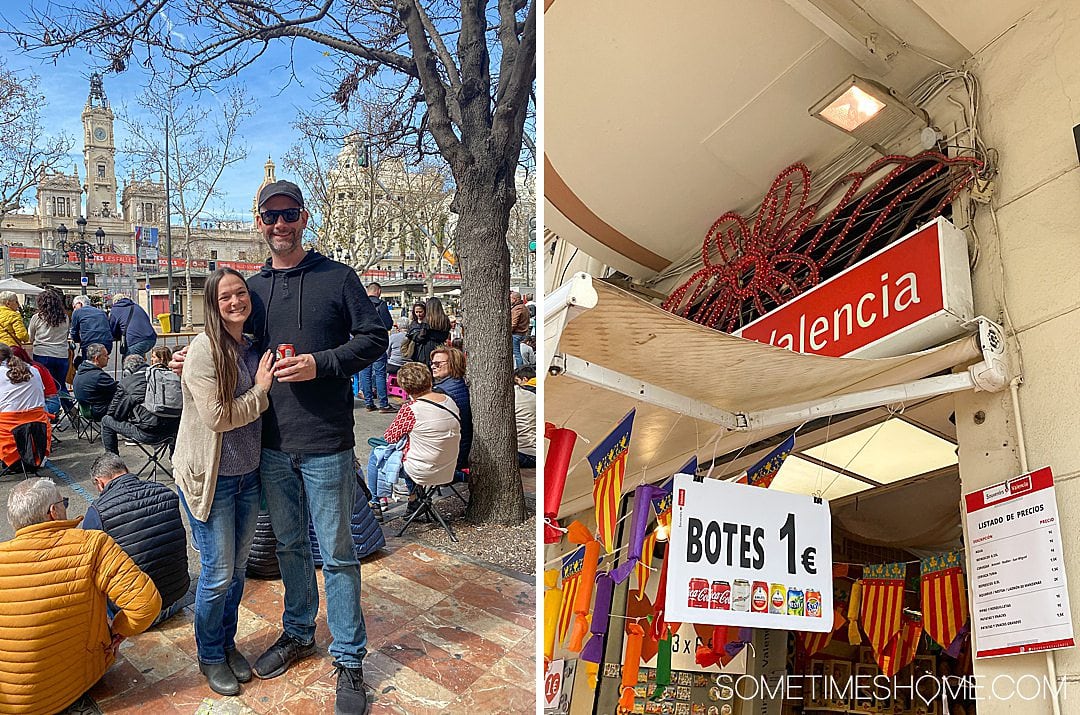
A Huge Sculpture of the Virgin Mary is Adorned with Thousands of Flowers March 17 and 18
For two days, from 4:00pm onward into the evening, the Fallas commissions, who helped create the monuments and sculptures, visit a statue of the Virgin Mary, stories high. They offer flowers to her, and a team completes the design of her cape as they carefully place each stem.
It's appropriately located in the Plaza de la Virgen next to the Valencia Cathedral and Basilica of Our Lady of the Forsaken. (The Lady of the Forsaken is a Catholic invocation of the Virgin Mary.) This ritual is called “L'Ofrena de Flors”.
Fallas Fact: the Virgin Mary sculpture is 49 feet, or 15 meters, tall.
There is a Friendly Street Lights Decoration Competition in the Ruzafa Neighborhood
It felt a little like Christmas with all the lights up in the streets of the Ruzafa neighborhood, in particular. We learned it's because there's a competition for the best lights. We learned two communities within Ruzafa, in particular, are usually the ones competing for the top prize.
It's not uncommon to see the name of a company in lights at the start or end of a street, like Amstel. They sometimes provide sponsorship to help with the cost of the light creations. Hence the name of the company is then displayed on the street.
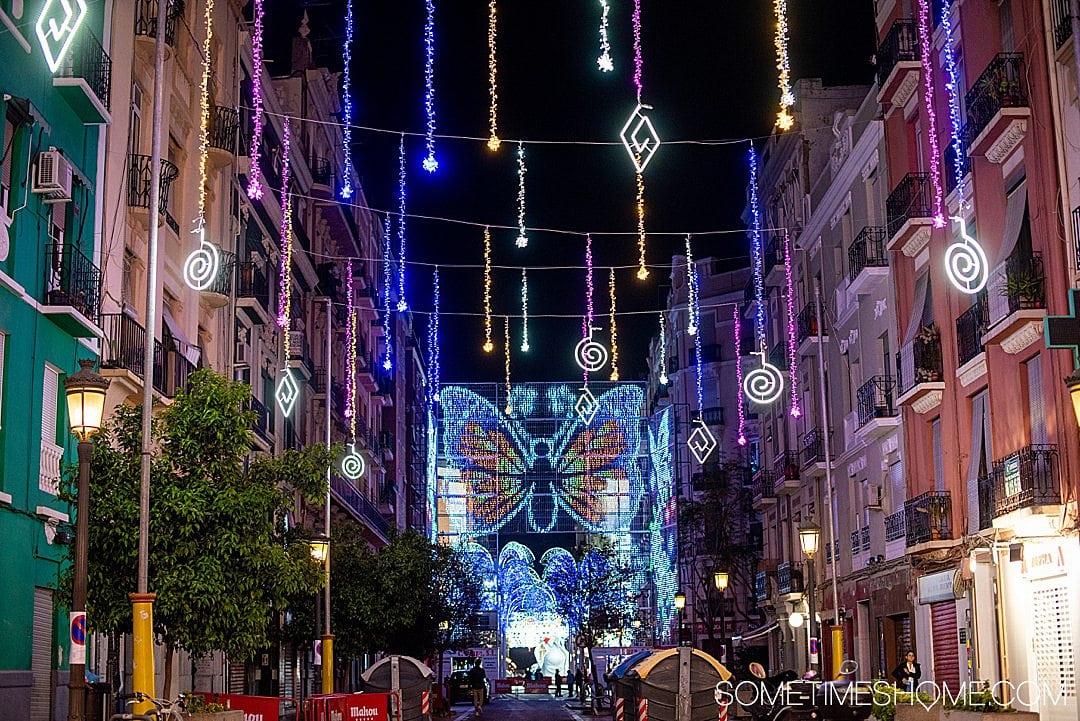
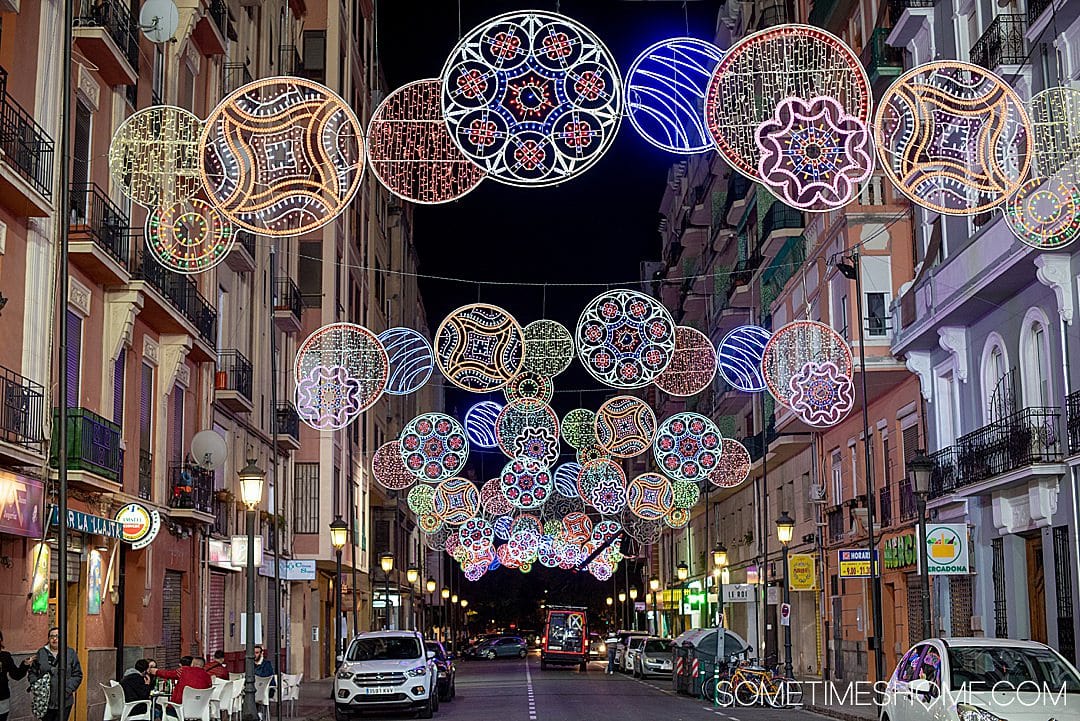
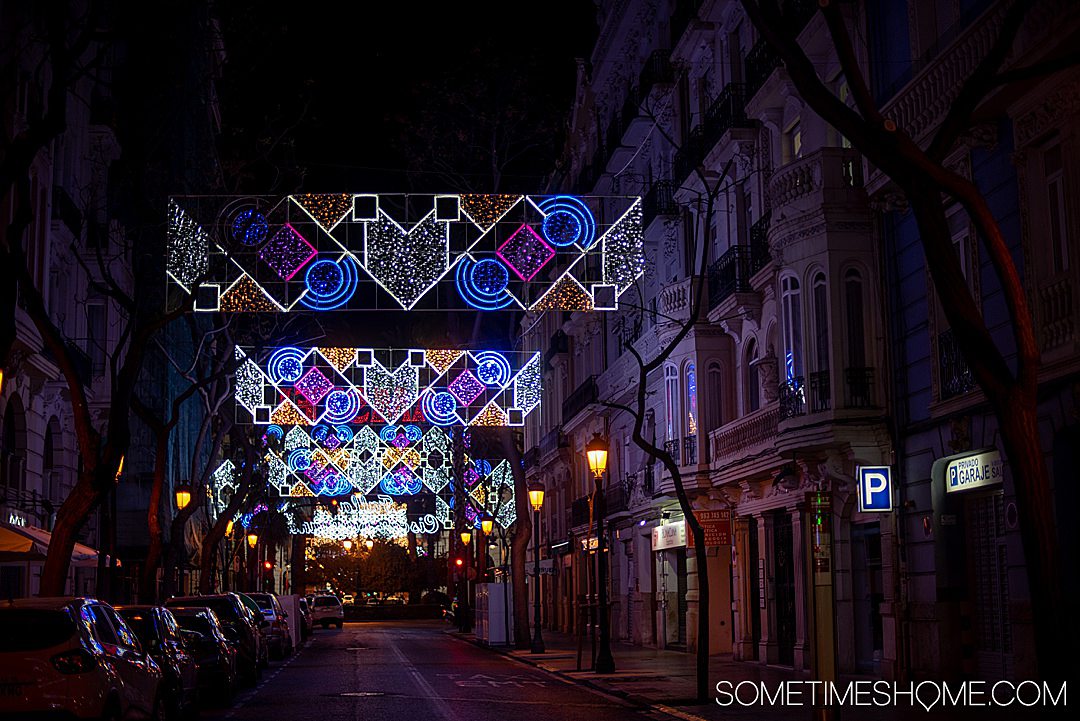
There's a Planned Gunpowder Explosion Every Day at 2:00 pm Called “Mascletà”
There's a loud gunpowder “ritual” every day, from the start of Falles to the end of it on March 19th at 2:00 pm. We saw people lining up to watch them earlier than noon.
You can't really see much but smoke in the air and a few sparkler fireworks at the finale. But you can HEAR it. We were surprised it didn't set off a chorus of barking dogs.
Luckily, we're not sure what bombs exploding in a town center sound like but if we had to guess, it's similar to this.
You can see the physical fireworks being strung up at this “fireworks headquarters” of sorts in the main square, Plaza del Ayuntamiento, within a caged-off area. If you look closely at the photo, you can see many pink fireworks on strings. That's what they set off at 2:00 pm.
Fallas Fact: we heard everyone in Valencia calling them “fireworks.” Well, they are, technically. But Americans (like us) automatically think of colorful displays of fireworks, like nighttime shows at Walt Disney World or the Macy's July 4th Fireworks in NYC when we hear that term. They're not like that. They're more so fireworks of noise than visual splendor.
Read on for when the colorful fireworks displays happen during Falles, Valencia's beloved annual festival…
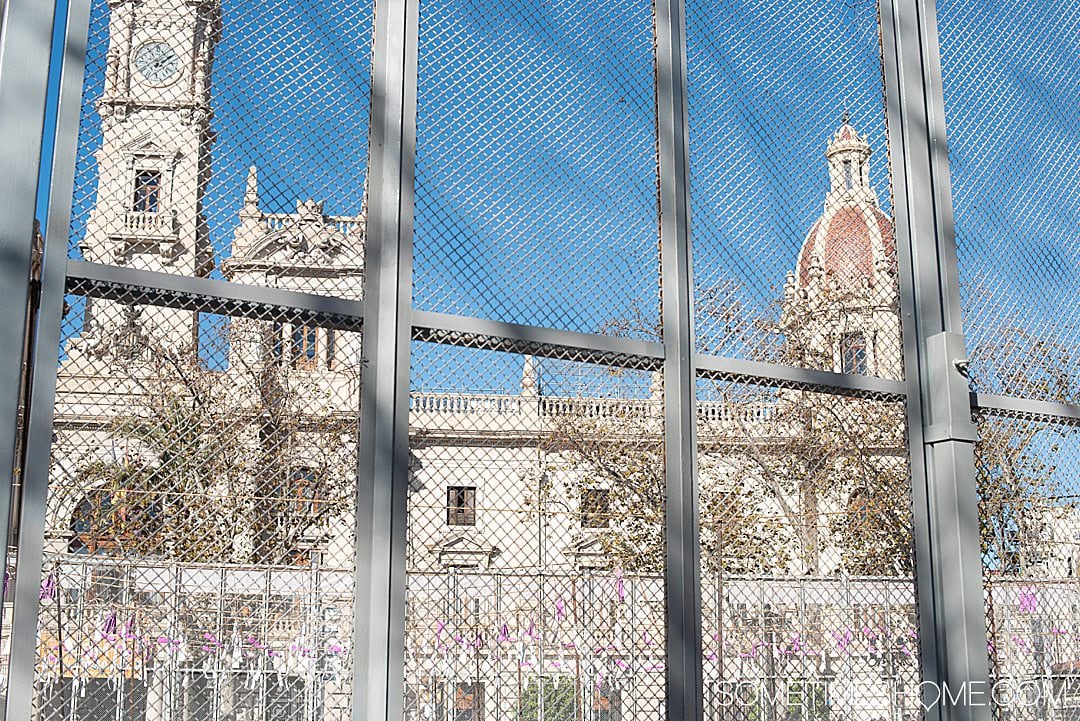
A Fallas Queen is Chosen Annually Who Reigns Supreme for One Year
The “Fallera Major,” as she's called, is a highly coveted position. The tradition of selecting one began in 1931. We saw the candidates on the balcony of Valencia's City Hall being applauded and loved by everyone on the streets below when we walked back to our hotel after midnight fireworks on March 7, which was still 12 days away from the main event of the annual celebration.
The Fallera Major wears a beautiful gown made of silk and wears a traditional Falles hairstyle. A gown made of real silk, with traditional accessories, can cost upwards of €10,000.
There are Lots of Fireworks in the Main Square, Mostly the Four Days of the Main Event March 15 through 19
About those fireworks that we saw at midnight! There are various fireworks displays. I guess we got lucky by seeing them on a Saturday night after our fabulous dinner in Valencia.
The schedule of fireworks displays during Fallas is the last five days of the celebration. And they're late at night. For instance, we saw scheduled times of them happening at 1:00 am, 1:30 am and even 2:00 am.
We've heard the locals leave town during Fallas – maybe it's because they don't want to be woken up in the middle of the night by loud booms!
It seems we got lucky that the evening we saw them, they were only at midnight. An early show for the Valencians! We waited around amongst the excited crowd for about 15 minutes before they started, right on schedule. It was worth the wait!
The energy around us and from the pyrotechnics show was grand. It was also cool to see everyone on their balconies in the square, watching from offices and their apartments.
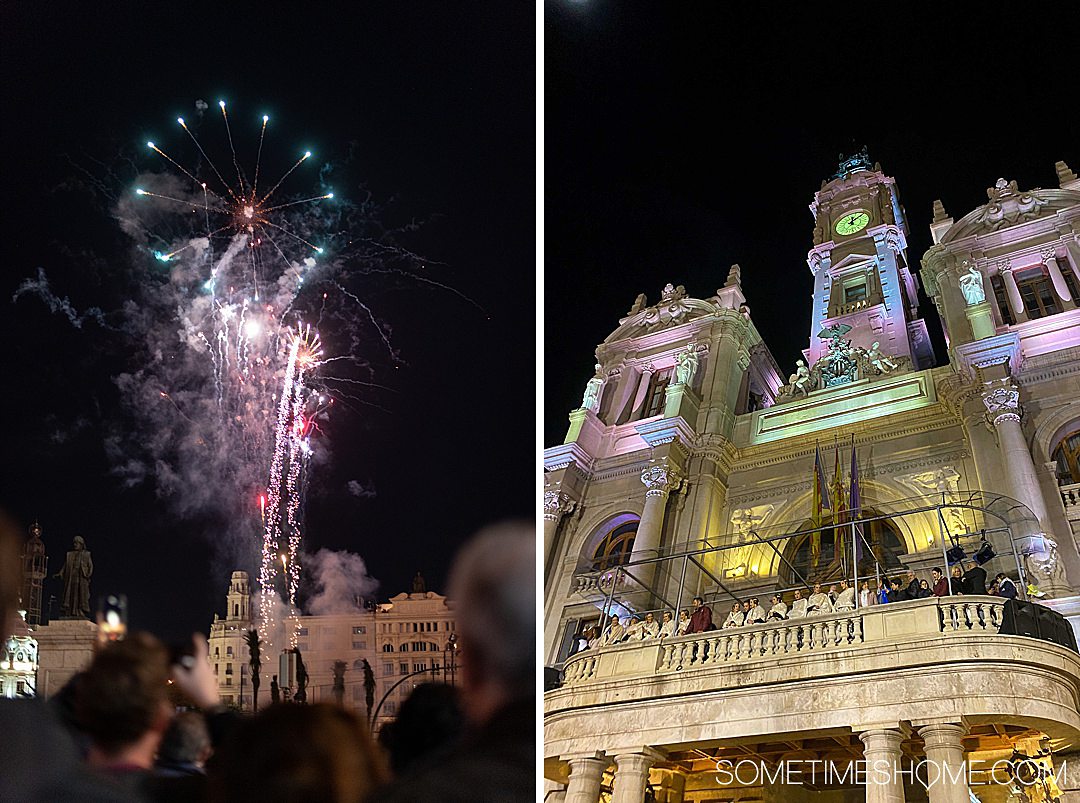
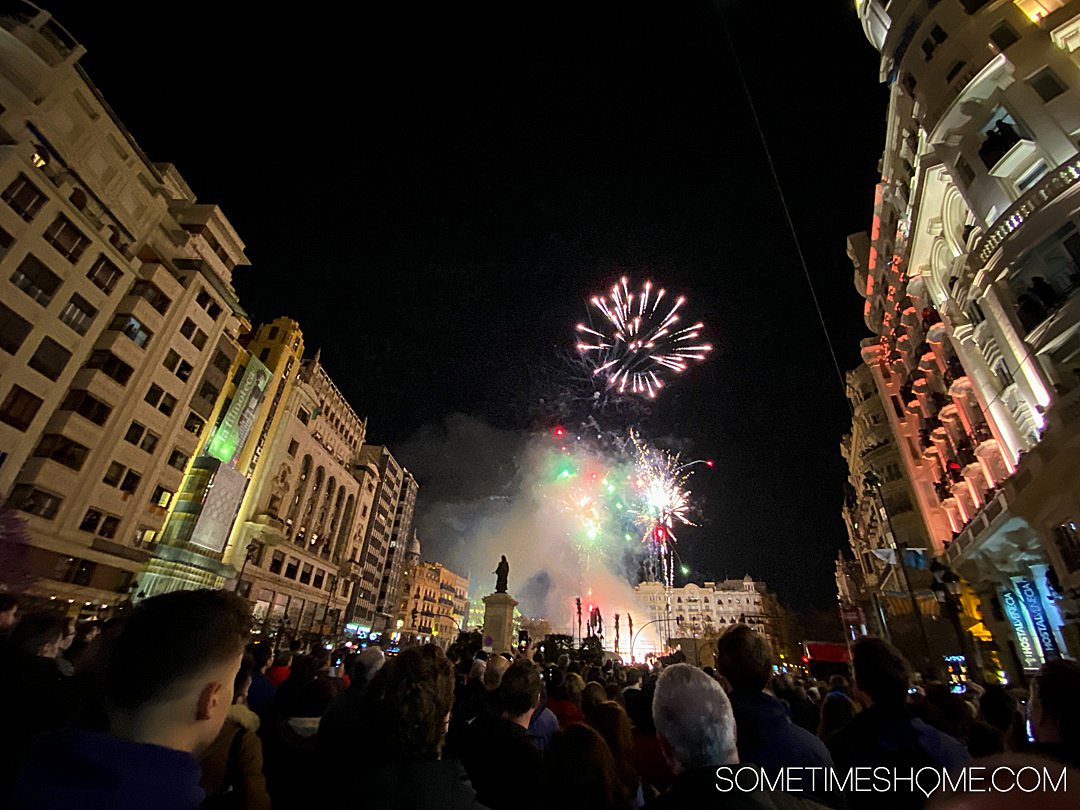
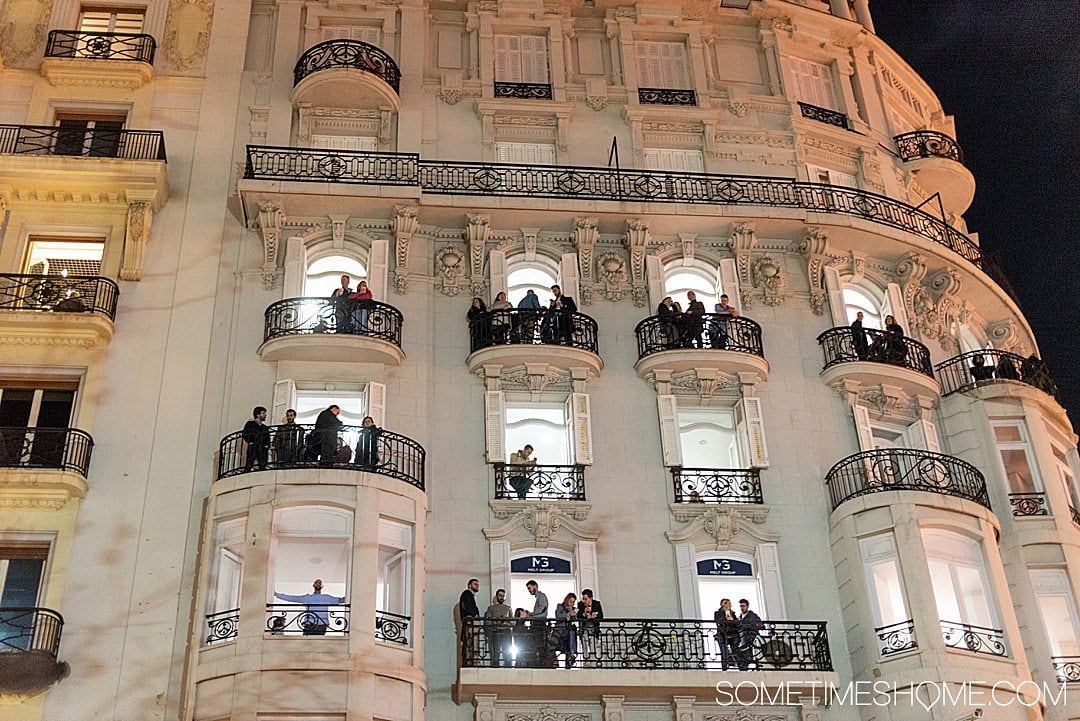
How is Fallas Festival Funded and What Does it Bring to Valencia?
Neighborhoods pay a lot of money to contribute to their fallas each year. And the festival brings millions to Valencia.
We're not sure exactly how much money goes into the sculptures, parades, costumes, committees, paying artists and the like. But we were given a little inside information from our hotel concierge that it's a very expensive celebration to put on. And the individual neighborhoods and “Fallas commissions” bear much of the brunt of that expense. But it makes them proud to be Valencian.
Consider that Fallas brings millions of dollars (or euros) to the city annually as well. To the tune of about half €500,000. And we can't recommend visiting during the first few week of March to witness aspects of it yourself enough! Join the festivities.
Disclosure: There may be affiliate links in this post, which means we may earn a small commission if you click the link and proceed with a purchase, at no cost to you. We truly only recommend products or services we personally use.
Heading to Spain? Also check out:
- What to Eat in Valencia that's Traditional and Delicious
- One Perfect Day in Granada Spain
- Is One Day in Madrid Enough?
- Vital Info Renting a Car in Madrid from Europcar with Discover Cars



